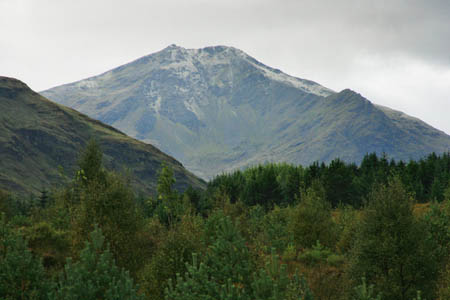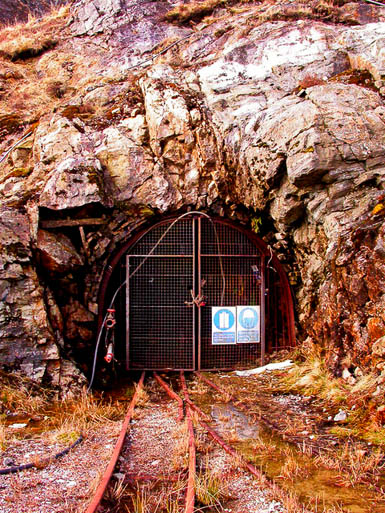
The mine lies on the route for walkers and climbers heading for the 1,130m (3,707ft) Ben Lui
A controversial plan to reopen a goldmine in a Highlands national park was given the go-ahead today.
The Loch Lomond and the Trossachs National Park Authority approved the proposal for the Cononish mine in the shadow of Ben Lui, Scotland’s 28th highest munro.
National park bosses admitted there would be a loss of the Highland glen’s special character, but said there were economic benefits and a long-term conservation improvement.
The developer, Scotgold Resources, resubmitted plans for the mine at the foot of Beinn Chuirn near Tyndrum after they were initially turned down.
Linda McKay, national park convener, said: “Without question this has been the largest and most complicated planning application we have ever had to consider.
“As guardians of some of the most stunning scenery in Scotland, it would have been easy to refuse the second application if we were considering the short term impact on the landscape but this national park plans for long term conservation management and that includes having the vision to see beyond the temporary life of the gold mine.
“We also have to take into consideration the support from the local community council who back the proposals.
“When the first application was refused, our main concern was the size and shape of the tailings management facility and poor restoration proposals meant there would be serious long term impacts on Glen Cononish.
“Immediately after the refusal, national park officers took a constructive and proactive approach with the applicant to find solutions to the main objections.
“With the second application, the applicant halved the size of the TMF and redesigned its shape to fit in the landscape. We also have a 30-year commitment to improve the wider Glen Cononish.
“The Greater Cononish Glen Management Plan will include extending existing native Caledonian pine forest and improving habitats and access tracks. This legally binding agreement means the glen will regain its quiet, remote character following closure of the mine and the landscape will be improved from its current state.
“Conservation and the visitor experience are key areas of work for the national park authority and our involvement does not end with this decision. There are almost 50 conditions the applicant will have to comply with along with legal agreements. Working with the applicant we will appoint a dedicated officer who will monitor the development pre and post operation to make sure every condition is being applied to a best practice standard.
“Overall, as a board we understand that there will be a temporary loss to Glen Cononish’s special character but we have greater confidence that we can secure both long term conservation gain and economic benefits to the local economy and Scotland.”
Scotgold Resources estimates it can extract £22m-worth of gold annually from the mine, which will be the only working one in Scotland.
The development will cover 39ha and will include the underground mine, large processing and storage building and tailings management facility. The annual extraction will be about 72,000 tonnes of ore.
It is estimated that of this ore 21,000 ounces of gold and 83,000 ounces of silver would be recovered annually.
The developer will implement a 30-year management strategy covering the Cononish Estate. The Greater Cononish Glen Management Plan will include extending an existing native Caledonian pine forest and restructuring the edges of the Forestry Commission plantation on the north side of the glen through selective felling and new planting.
There will also be improvements to soften the landscape impact of the Glen track.
Access will be maintained for walkers and climbers using the Glen which leads to the eastern approach to Ben Lui and to Beinn Dubhcraig and Ben Oss as well as winter ice climbing at Eas Anie.
The project is expected to create 52 jobs over 10 years and contribute £80m to the Scottish economy. There are outstanding discussions to finalise the applicants planning obligations in a legal agreement before the final decision notice can be issued.
Almost 50 conditions are attached to the approval.
